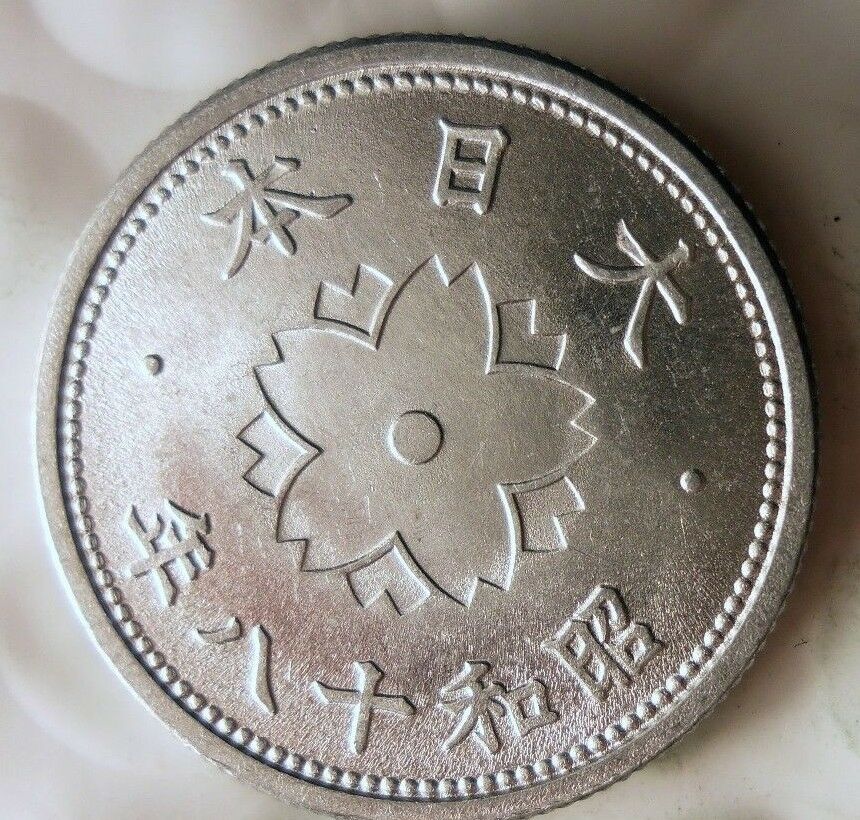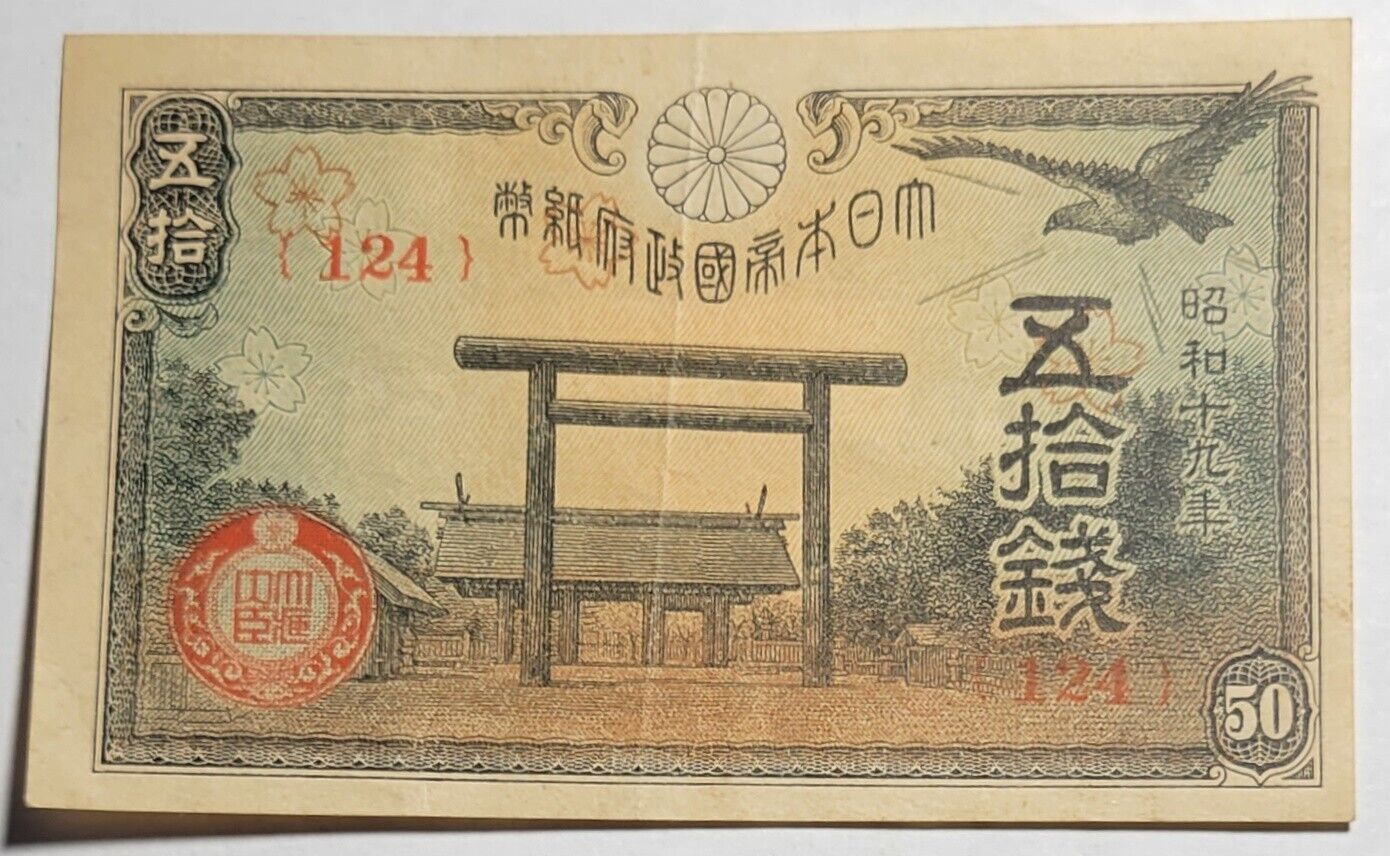-40%
Philippines JIM WWII 1945 1000 P Japanese Invasion Money ND P115 Countersigned
$ 17.68
- Description
- Size Guide
Description
Japanese Invasion Money (JIM)P 115 ND (1945)
1000 Pesos
Front: Blue to Purple
Back: Olive
Plate used: PU
Scan is EXACTLY what you will receive.
REGISTERED International Mail
Estimated 2-5 weeks, Depending on YOUR Location and Inbound Customs Timeline
INFO:
Japanese War Notes Claimants Association overprinted occupation currency.
The Japanese flooded the Philippine Islands with worthless occupation currency during WW2. At the end of the war many Pinoys had thousands of the pesos that were without value. In the hope that the money would be redeemed by the United States or the new Philippines Government, an organization called the Japanese War Notes Claimants Association of the Philippines (JAPWANCAP) began overprinting the notes in purple or black ink in 1953. The organization gathered and held the notes, provided receipts to the owner, and marked the notes with various stampings. There are four major shapes of overprints: a large oval (71 x 56mm), a small oval (59 x 36mm), a small fat oval (55 x 40mm) and a circular overprint (38mm). Within the four shapes, there are generally recognized to be nine texts, some with very minor differences. There's are not propaganda overprints.
During the occupation of the Philippines, General MacArthur ordered that the circulation of the several million fake Japanese war notes to be used by the Allied Forces to support U.S. intelligence agents and bye the Filipino resistance movement. Another purpose was to sabotage and wreak havoc on the economy of the Philippines during the Japanese occupation. The JAPWANCAP sought; reimbursement for the counterfeit JIM in its possession: redemption by the U.S. of the non-counterfeit JIM, and payment b the U.S. of its claims against Japan for the loss of human life and physical destruction...
The U.S. courts decreed that the statute of limitations had passed. By using this “loophole” the courts were able to avoid the difficult issue of determining the validity of the claims...
After World War II, an organization called "The Japanese War Notes Claimants Association of the Philippines, Inc." (JAPWANCAP) was founded on 8 January 1953. Its purpose was to pressure the Philippine and U.S. governments to redeem or to pay a fraction of the value of the Japanese military issues of currency for the Philippines. The Association held the notes, issued membership certificates, official ID cards and deposit pass books. These certificates were issued for a fee. The Filipino legislature was not interested in pursuing the matter and nothing came of it. In 1967, JAPWANCAP unsuccessfully sued the U.S. government for reciprocity and lost. Court battles against Japan have raged up until recently with cases going to Japan's highest courts. To date, no person issued Japanese Invasion money in place of their own money has been awarded compensation. Pursuant to the Treaty of San Francisco signed September 1951 Japan made restitution on a federal, not individual, level.
NOTE: Some note issues are most often available with slight evidence of very light counting folds which do not "break" the paper. A banknote that has less than perfect corners is considered nearly uncirculated. Many collectors and dealers refer to such notes as AU-UNC
ABOUT UNCIRCULATED (AU): A virtually perfect note, with some minor handling. May show very slight evidence of bank counting folds at a corner or one light fold through the center, but not both. An AU note can not be creased, a crease being a hard fold which has usually "broken" the surface of the note. Paper is clean and bright with original sheen. Corners are not rounded.
EXTREMELY FINE (EF/XF): A very attractive note, with light handling. May have a maximum of three light folds or one strong crease. Paper is clean and bright with original sheen. Corners may show only the slightest evidence of rounding. There may also be the slightest sign of wear where a fold meets the edge.
VERY FINE (VF): An attractive note, but with more evidence of handling and wear. May have several folds both vertically and horizontally. Paper may have minimal dirt, or possible color smudging. Paper itself is still relatively Crisp and floppy. There are no tears into the border area, although the edges do show slight wear. Corners also show Wear but not full rounding.
FINE (F): A note which shows considerable circulation, with many folds, creases and wrinkling. Paper is not excessively dirty but may have some softness. Edges may show much handling, with minor tears in the border area. Tears may not extend into the design. There will be no center hole because of excessive folding. Colors are clear but not very bright. A staple hole or two would not be considered unusual wear in a Fine F note. Overall appearance is still on the desirable side.
VERY GOOD (VG): A well-used note, abused but still intact. Corners may have much wear and rounding, tiny nicks, tears may extend into the design, some discoloration may be present, staining may have occurred, and a small hole may sometimes be seen at center from excessive folding. Staple holes and pinholes are usually present, and the note itself is quite limp but NO pieces of the note can be missing. A note in VG condition may still have an overall not unattractive appearance.
GOOD (G): A well-worn and heavily used note. Normal damage from prolonged circulation will include strong multiple folds and creases, stains, pinholes and/or staple holes, dirt, discoloration, edge tears, center hole, rounded corners and an overall unattractive appearance. No large pieces of the note may be missing. Graffiti is commonly seen on notes in G condition.
FAIR (FR): A totally limp, dirty and very well used note. Larger pieces may be half torn off or missing besides the defects mentioned under the Good category. Tears will be larger, obscured portions of the note will be bigger.
POOR (PR): A "rag" with severe damage because of wear, staining, pieces missing, graffiti, larger holes. May have tape holding pieces of the note together. Trimming may have taken place to remove rough edges. A Poor note is Desirable only as a "filler" or when such a note is the only one known of that particular issue
Free Registered Mail For The Locations Below:
Athens, Greece, Bahrain, Bahrain, Belgium, Bogota, Colombia, Brunei, Darussalam, Cairo, Edgypt, Charles de Gaulle, France, Dammam, Saudi Arabia Dhaka, Bangladesh, Dubai, UAE, Frankfurt, Germany, Guam, Helsinki, Finland, Italy, Jeddah, Saudi Arabia, Larnaca, Cyprus, Madrid, Spain, Malaysia, Myanmar, Netherlands, Oslo, Norway, Qatar, Riyadh, Saudi Arabia, Sao Paolo, Brazil ,Seoul, Korea, Switzerland, Taiwan, Tokyo, Japan, Vienna, Austria, Vietnam, Shinfukuoka, Japan, Tokyo, Japan, New Delhi, India, New York, USA, Naka, Japan, Riyadh, Saudi Arabia, Singapore, Singapore, Thailand, Zurich, Switzerland, Milan, Italy, Amsterdam, Netherlands, Brussels, Belgium, Canada, Charles de Gaulle, France, Chubu, Japan, Dubai, UAE, Guanzhou, China, Hongkong, China, Jakarta, Indonesia, Karachi, Pakistan, London Heathrow, Great Britain, Los Angeles, USA, Naha, Japan, San Francisco, USA
All Other Locations Use Express Shipping Due To Pandemic Restrictions.










